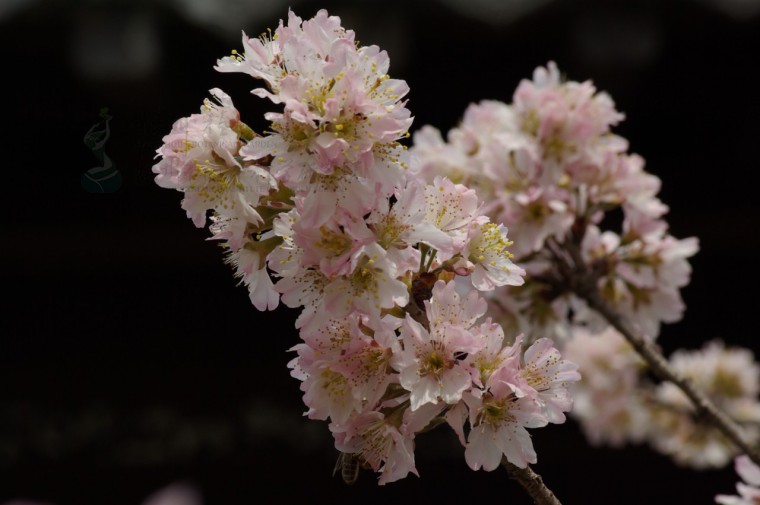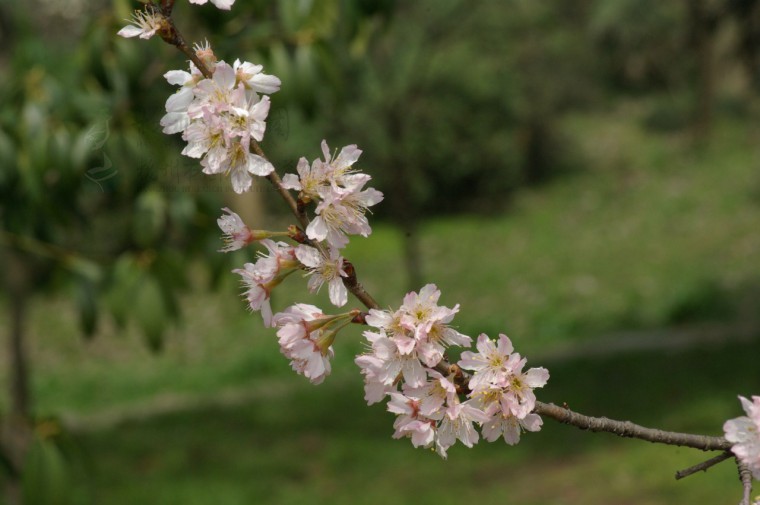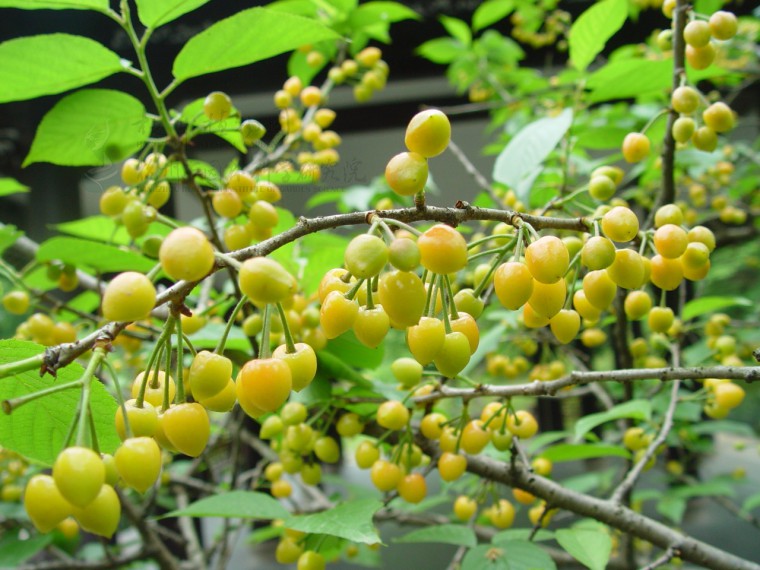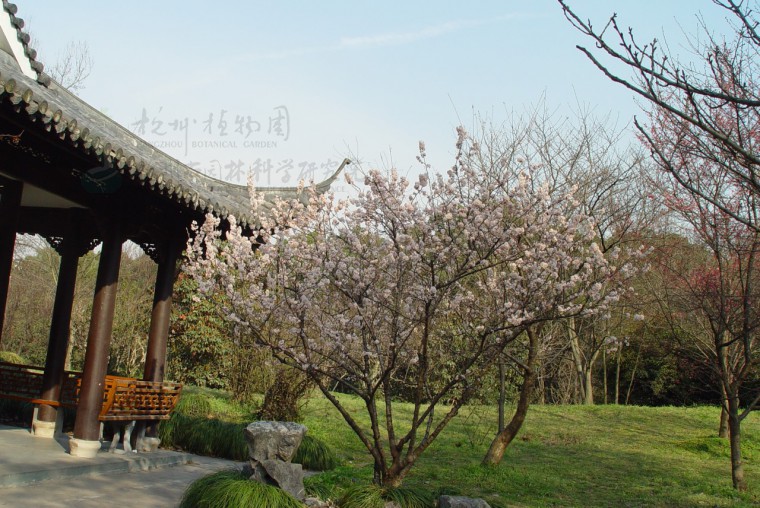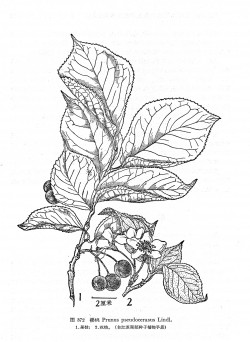形态描述
乔木,高2~6m,树皮灰白色。叶片卵形或长圆状卵形,长5~12cm,宽3~5cm,先端渐尖或尾状渐尖,基部圆形,边有尖锐重锯齿,齿端有小腺体,上面暗绿色,近无毛,下面淡绿色,沿脉或脉间有稀疏柔毛,侧脉9~11对;叶柄长0.7~1.5cm,被疏柔毛,先端有1或2个大腺体;托叶早落,披针形,有羽裂腺齿。花白色,伞房状或近伞形花序有花3~6朵,先叶开放;总苞倒卵状椭圆形,褐色,长约5mm,宽约3mm,边有腺齿;花梗长0.8~1.9cm,被疏柔毛;萼筒钟状,长3~6mm,宽2~3mm,外面被疏柔毛,萼片三角卵圆形或卵状长圆形,先端急尖或钝,边缘全缘,长为萼筒的一半或过半;花瓣卵圆形,先端下凹或二裂;雄蕊30~35枚,栽培者可达50枚;花柱与雄蕊近等长,无毛。核果近球形,红色,直径0.9~1.3cm。花期3~4月,果期5~6月。
分布地区
系栽培种,见于西湖景区(九溪、柳浪闻莺)。分布于甘肃、河北、河南、江苏、江西、辽宁、四川、山东、陕西、浙江。
主要用途
果供食用,也可酿樱桃酒。枝、叶、根、花也可供药用。
中国植物志英文版
Prunus pseudocerasus Lindley, Trans. Hort. Soc. London 6: 90. 1826; Cerasus scopulorum (Koehne) T. T. Yü & L. C. Li; Prunus involucrata Koehne; P. pauciflora Bunge; P. scopulorum Koehne. Trees 2–8 m tall. Bark grayish white to reddish brown. Branchlets grayish brown; young branchlets green, glabrous or pilose. Winter buds ovoid to long elliptic, glabrous or subglabrous. Stipules lanceolate to narrowly lorate, soon caducous, margin gland-tipped fimbriate. Petiole 0.5–1.5 cm, glabrous or pilose, apex with 1–3 large nectaries; leaf blade ovate, oblong-ovate, or long elliptic, 5–12 × 3–6 cm, abaxially pale green and pilose along and between veins, adaxially dark green and subglabrous, base rounded, margin acutely biserrate or incised serrate, teeth with a minute apical gland; secondary veins 9–11 on either side of midvein. Inflorescences corymbose or subumbellate, 3–7-flowered; involucral bracts brown, obovate-elliptic, ca. 5 × 3 mm, margin glandular serrate. Flowers opening before leaves. Pedicel 0.8–1.9 cm, pilose. Hypanthium campanulate, 3–6 × 2–3 mm, outside pilose. Sepals triangular-ovate to ovate-oblong, 1/2 or more as long as hypanthium, margin entire, apex acute to obtuse. Petals white, ovate to long elliptic, apically emarginate or 2-lobed. Stamens 30–35(–50 in cultivated varieties). Style nearly as long as stamens, glabrous. Drupe red, subglobose, 0.9–1.3 cm in diam.; endocarp ± sculptured. Fl. Mar–Apr, fr. May–Jun. Sunny mountain slopes, sides of ravines, usually cultivated; 300--1200 m. Anhui, Fujian, Gansu, Guizhou, Hebei, Henan, Hubei, Hunan, Jiangsu, Jiangxi, Liaoning, Shaanxi, Shandong, Shanxi, Sichuan, Yunnan, Zhejiang.----from “Flora of China”
